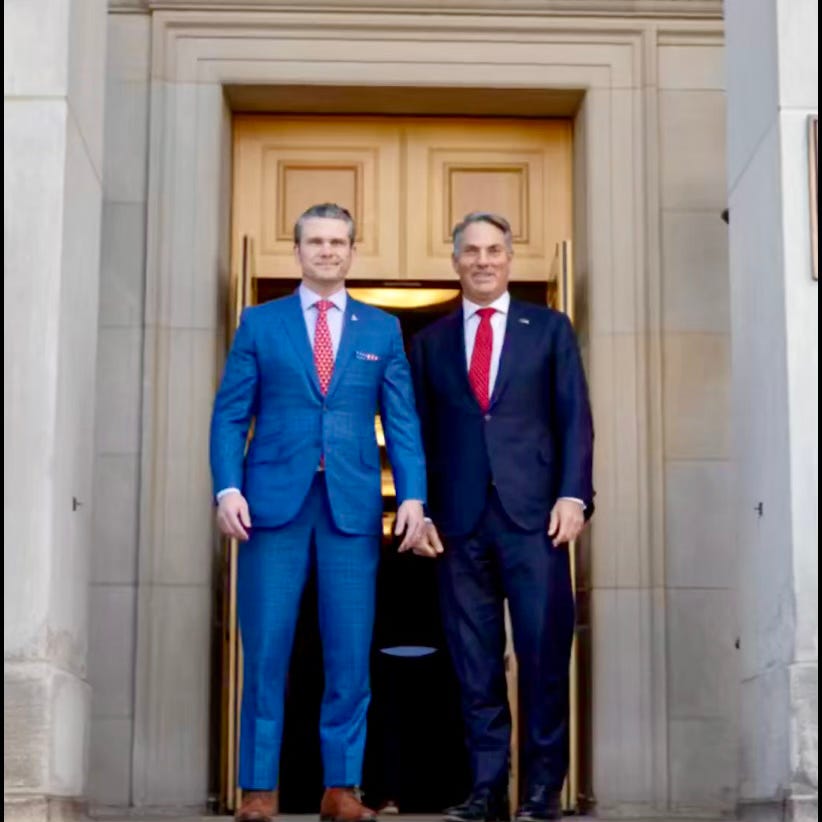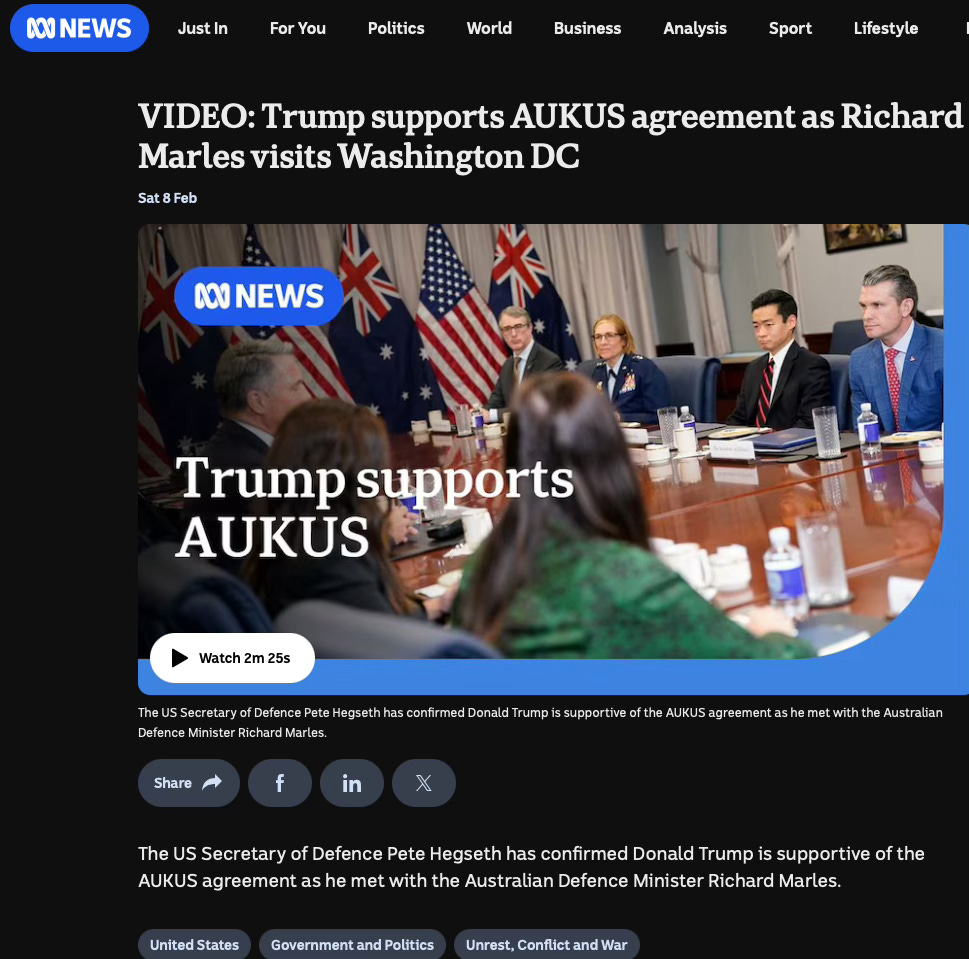Kelvin Wake Exposes US nuclear submarine fleet but AUKUS talks continue in Washington
Scientists in China have stealth submarine detection technology that can track the quietest underwater vessels easily. AUKUS top of agenda as Richard Marles meets Pete Hegseth in Washington.
China could detect US’ stealth submarines with new tech that tracks surface disturbance
The Kelvin wakes cannot be silenced, which the team uses to identify stealth vessels in the waters.
By Prabhat Ranjan Mishra
Scientists in China have advanced their tech to detect stealth submarines. Their latest innovation can reportedly track the quietest underwater vessels easily. The innovation is expected to reshape naval warfare.
Developed by researchers at Northwestern Polytechnical University (NPU) in Xian, the groundbreaking discovery detects vessels by harnessing the magnetic fields generated by their wakes.
The team focused on studying the impact of Kelvin wake, a V-shaped wave pattern created by submarines or other ships while sailing. The waveforms are at a consistent angle due to the interaction of transverse and divergent waves.
Kelvin wake creates detectable magnetic field
Chinese researchers revealed that Kelvin wake creates a faint but detectable magnetic field. It’s generated as seawater ions interact with the Earth’s geomagnetic field after being disturbed by the submarine’s motion.
Using numerical simulations, the researchers quantified how these magnetic signatures vary with a submarine’s speed, depth, and size. For example, increasing speed by 2.5 meters per second (8.2 feet per second) boosts magnetic intensity tenfold; reducing the depth by 20 meters (66 feet) doubles the field strength; and longer submarines produce weaker fields, while wider hulls amplify them reported SCMP.
Magnetic wakes persist long after a submarine passes
The team’s findings published in the Journal of Harbin Engineering University reveal that the Kelvin wakes cannot be silenced, which the team uses to identify stealth vessels in waters.
Researchers also revealed that the Magnetic wakes could help China detect stealth submarines. Passes and leave footprints in the ocean’s magnetic fabric.
The method is claimed to be useful during a military conflict with Taiwan as the vast areas of shallow waters surround the island nation. However, like the Seawolf class, the United States submarines could slip through such waters undetected. But it’s now being claimed that the Seawolf-class submarines could be detected using China’s latest tech.
Seawolf-class submarines could be at risk of detection with latest tech
Equipped with advanced sensors, this submarine class is exceptionally quiet, fast, and well-armed. Instead of Vertical Launch System (VLS), the Seawolf class has eight torpedo tubes and can hold up to 50 weapons in its torpedo room.
It has a great diving depth of 600 meters, far exceeding the typical maximum diving depth of around 300 meters for ordinary submarines. Seawolf-class uses anechoic tiles on the exterior and a shock-absorbing floating raft system inside, making it almost undetectable by sonar even at a cruising speed of 20 knots.
However, a report claims that magnetic waves could add another layer to the kill web of Seawolf-class submarines. While no technology guarantees sub-detection, China is weaving magnetic tracking into a broader “kill web” that includes acoustic arrays, satellites, drones, and AI algorithms to fuse data streams.
https://interestingengineering.com/military/china-could-detect-us-stealth-submarines
Wake Features of Moving Submerged Bodies
Motion State Inversion of Submarines
The interaction between a moving submerged body and a homogeneous/stratified fluid generates a Bernoulli hump, a Kelvin wake, and an internal wake on the water surface. The height distribution of wakes is directly related to the location and motion state of the submerged body. Thus, it is possible to retrieve kinematics information of a submarine from the images of wakes obtained by photoelectric detection equipment. In order to extract the submarine’s location and velocity information effectively from the wake photoelectric images, we investigate the relationship between the motion state of moving submerged bodies and wakes in this paper.
Bernoulli hump, Kelvin wake, and internal wake models are established based on potential flow theory and thin-ship approximation. We analysed the wave crest-line pattern and the energy characteristics of Kelvin wake components (divergent and transverse waves) and internal wakes at different velocities and diving depths. Finally, we propose a method for estimating the velocity of a submarine based on the wake wavelength and the diving depth inversion method based on the Fourier power spectrum of the Kelvin wake. The results obtained prove the feasibility of using photoelectric equipment to obtain wake images for use in analyzing the kinematics state of submarines, which are of guiding significance for detection and information processing in real-scale submarines.
https://www.researchgate.net/publication/338586275_Wake_Features_of_Moving_Submerged_Bodies_and_Motion_State_Inversion_of_Submarines
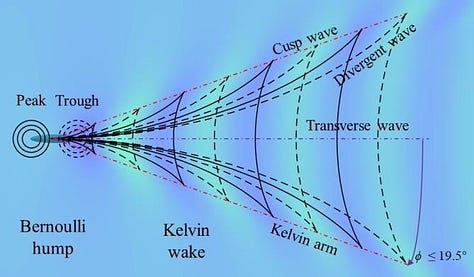


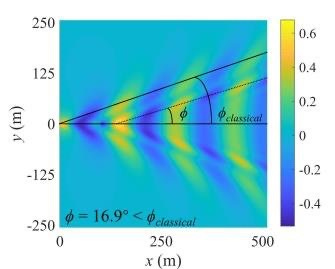
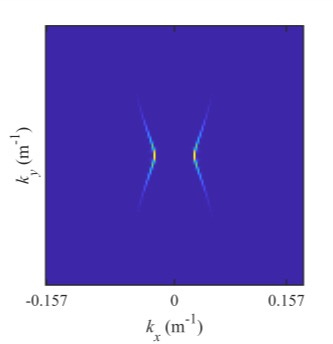
China can detect US Seawolf-class submarine with magnetic wake tracking: study
Stealth may soon be an impossible feat for submarines, after scientists found a way to detect even the quietest underwater vessels.
For US submarines operating in waters near China, the era of absolute stealth may be ending – one magnetic ripple at a time.
Researchers with Northwestern Polytechnical University (NPU) in Xian claim to have developed a groundbreaking method to detect even the quietest underwater vessels by harnessing the magnetic fields generated by their wakes – a discovery that could reshape naval warfare.
Led by associate professor Wang Honglei, the team modelled the Kelvin wake, a V-shaped surface disturbance created by submarines as they slice through water. This wake, previously studied for radar-based imagery detection, generates a faint but detectable magnetic field when seawater ions – disturbed by the vessel’s motion – interact with the Earth’s geomagnetic field.
Using numerical simulations, the researchers quantified how these magnetic signatures vary with a submarine’s speed, depth and size. For example, increasing speed by 2.5 metres per second (8.2 feet per second) boosts magnetic intensity tenfold; reducing depth by 20 metres (66 feet) doubles the field strength; and longer submarines produce weaker fields, while wider hulls amplify them.
For a Seawolf-class submarine travelling at 24 knots (12.5 metres per second) and 30 metres (98 feet) depth, the wake’s magnetic field reaches 10⁻¹² tesla – “well within the sensitivity range of existing airborne magnetometers”, according to Wang and his colleagues.
The team’s method, which was detailed in the peer-reviewed Journal of Harbin Engineering University on December 4, exploits a critical vulnerability: “Kelvin wakes cannot be silenced.”
https://www.scmp.com/news/china/science/article/3297575/china-can-detect-us-seawolf-class-submarine-magnetic-wake-tracking-study
Opening Remarks, Meeting with US Secretary of Defense, Washington DC
PETE HEGSETH, US SECRETARY OF DEFENSE: Welcome, Mr Deputy Prime Minister. Thank you so much. It’s our first in person meeting, we had the chance to speak over the phone, but just grateful that you made the trip. And even more meaningful, we’re headed to Arlington National Cemetery after this to lay a wreath for the shared memory of fallen warriors. And it’s that strong bond across many generations between America and Australia that unites us together, whether we like it or not, but we like it. We fought shoulder to shoulder in every major conflict since World War One – from the Western Front, to Guadalcanal, to Vietnam, to Afghanistan. During my time in Afghanistan, I served with members of the Australian military who were some of the finest. So I personally, through NATO, have seen that. And just look forward to today’s discussion. We’ve got a lot to talk about on shared defence, our security priorities, the Indo-Pacific – the significant challenges and opportunities that you face there and we face – but Australia is the forefront of our alliance there and throughout the world, there’s just no doubt about it. And it’s strong and growing evermore, especially under President Trump’s leadership in the first administration and now again, he has charged me with making sure this is as robust an alliance as we have in the entire world. So as far as defence is concerned; force posture, defence industrial base, joint capabilities cooperation and AUKUS, of course, are signature parts. I just want to thank you for coming all the way to Washington. I look forward to seeing you on your turf in due time, and thank you for the time. Appreciate it and it’s good to see you.
RICHARD MARLES, DEPUTY PRIME MINISTER: Well thank you. Thanks Secretary Hegseth for having us here, and having me here. I might firstly start by expressing, through you, our sympathies and condolences to the families of those who lost their life in the recent airline tragedy. It’s something we saw from Australia and we know how much that will be felt in this town and around America. It’s an enormous honour to be here. I think this is the first meeting you’re having with a direct defence counterpart around the world, and it’s an enormous honour for me to be here and to see you in that role. We very much welcome what we’ve heard from the Administration and from you about the strength of American leadership, and specifically the strength of American leadership in the Indo-Pacific. That’s obviously critically important for us. But it’s not a surprise, because the whole idea of a free and open Indo-Pacific really has its origins during the first Trump Administration. So we are really grateful and excited about the statements in respect of that leadership that we’re hearing from you now. As you said, our Alliance is one which was born out of the Second World War, it was formalised in 1951. Throughout that period, we’ve fought in nearly every conflict together, in fact going right back, as you said, to the First World War. And as we spoke about on the phone, I know you had the first-hand experience of working with Australian personnel in Afghanistan. And the contemporary expression of the Alliance is really found in what we’re doing together in respect of AUKUS. AUKUS is a very powerful symbol of our two countries working together in the Indo-Pacific. It represents a very significant increase of the American footprint on the Australian continent, something we very much welcome. It represents an increase in Australian capability, through the acquisition of a nuclear‑powered submarine capability, but what comes with that is it also represents an increase in Australian defence spending. And we really understand the importance of building our capability, but in paying our way. That is a very important principle that we bring to bear. And one of the aspects of that is the contribution that we’re making to your industrial base, it’s billions of dollars. But we’re really pleased that the first payment in respect of that, half a billion dollars, we’ve been able to make in the first couple of weeks of the Trump Administration.
SECRETARY HEGSETH: The cheque did clear.
DEPUTY PRIME MINISTER: It did clear? Good, I wanted to know. But we’re really pleased to make it in the first week of your tenure as the Secretary of Defense. So I couldn’t be more excited about the meeting that we’re having today and really, thank you for having me.
SECRETARY HEGSETH: Thank you, to you and your staff for all being here. We appreciate it.
JOURNALIST: Are you withdrawing US troops from Syria, Mr Secretary?
SECRETARY HEGSETH: I look forward to talking about our Alliance with Australia. But as it pertains to the Middle East, those are decisions made by the President of the United States, looking at all our strategic interests. Here at the Pentagon, what we do is we plan. So we’re going to plan for every possible contingency no matter what. But ultimately we would be getting ahead of ourselves if we were determining, or certainly declaring, what our intention would be in the short, medium or long-term.
JOURNALIST: Secretary, have you spoken with the President about AUKUS?
SECRETARY HEGSETH: The President is very aware, supportive of AUKUS, recognises the importance of the defence industrial base, which the Deputy Prime Minister pointed out the investment Australia is willing to make. It enhances our ability in the subterranean space, but also our allies and partners. This is not a mission, in the Indo-Pacific, that America can undertake by itself. It has to be robust allies and partners. Technology sharing and subs are a huge part of it. So he’s aware and appreciative for his support and leadership on that topic.
JOURNALIST: Secretary, will you deliver Australia’s first nuclear submarine on time?
SECRETARY HEGSETH: We sure hope so. Part of what President Trump is committed to doing is cutting red tape, investing in the defence industrial base, ensuring that we stand by our allies and partners. I think that’s something that was missing in the last four years, that President Trump demonstrated – you’re going to have no worse enemy, and no better ally. And that’s what he’s charged me with at the Defense Department, is when we make these strategic partnerships and we invest in them, and there’s skin in the game, as the Deputy Prime Minister pointed out, we’re going to do everything possible we can to help deliver on that.
JOURNALIST: Is the US building its submarines quickly enough?
DEPUTY PRIME MINISTER: Well, we are pleased with the progress that we’re seeing in terms of the rate of production, both in terms of construction and sustainment. There have been challenges there in the past, but it is, of course, why we see that part of getting this done is for Australia to make the contribution that we are to the American industrial base, which is measured in billions of dollars. As I say, the first payment of that has been made in the last week or so. But we are encouraged by the progress, there’s a way to go, but this is something that jointly we’re going to get done. It needs to be done from the perspective of both of our countries. It needs to be done in terms of the deterrence that represents in the Indo-Pacific and around the world.
SECRETARY HEGSETH: Yep. Thank you very much.








